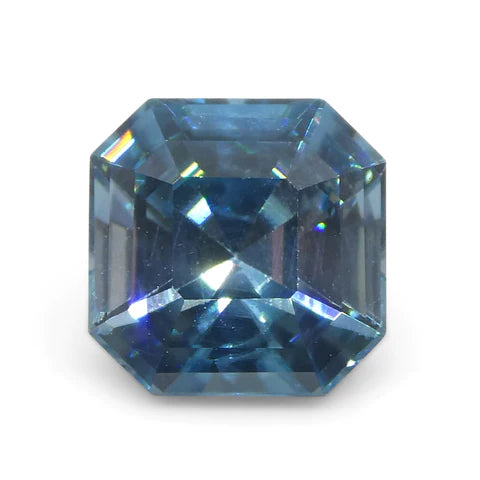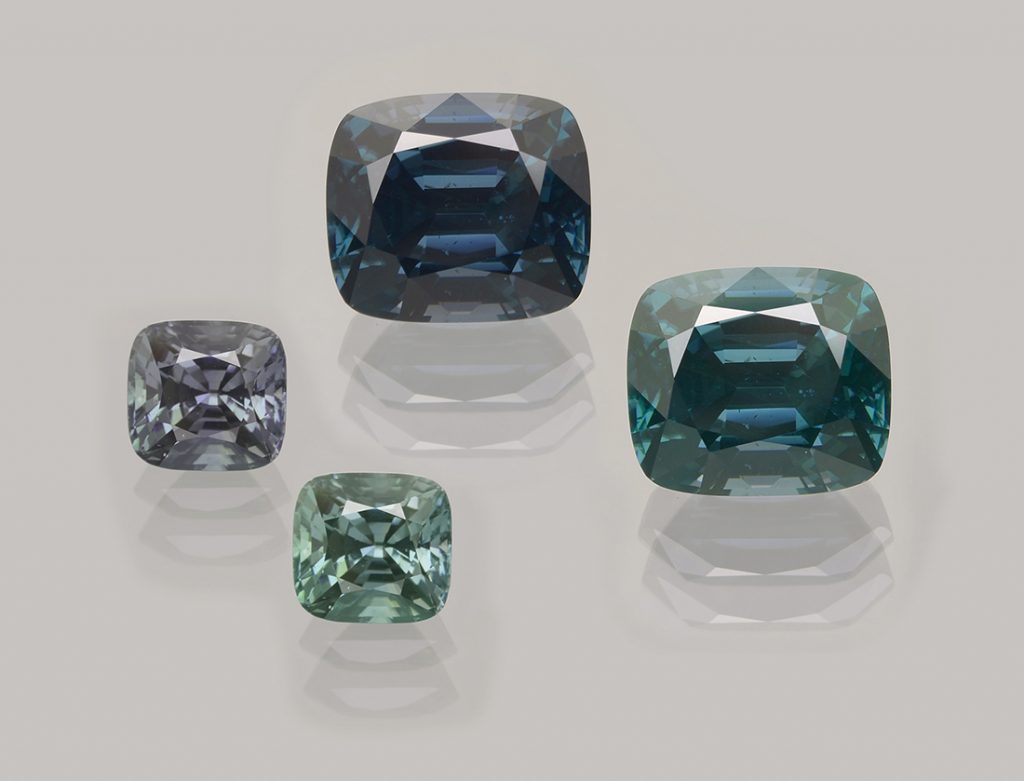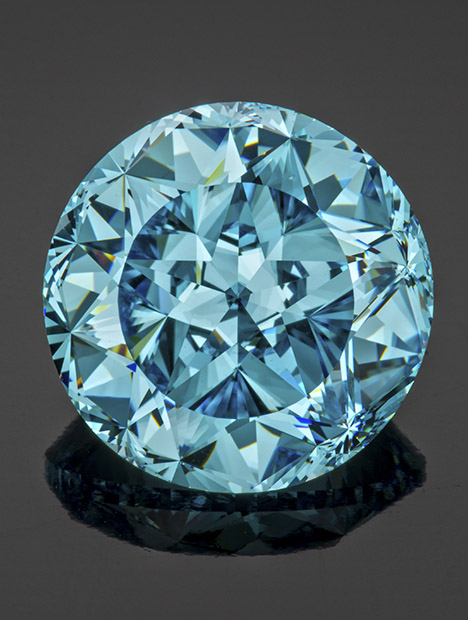
The Zing of Zircon, Part 3: Types and Treatments
Share
It is common for certain colours of zircon gemstone to be subjected to high temperature treatment as a means of enhancing their apparent hue, usually bringing low and intermediate type zircons into the high type category by facilitating their recrystallization. In addition to changing their appearance, the heat treatment of zircon gems can provide some clues about the chromophoric profile of certain zircon colours in light of the knowledge that exposing zircon to high temperatures can both repair internal damage associated with metamiction via recrystallization, and ionise certain impurities as is typical for the heat treatment of many gemstones. Brown zircon gems may become colourless upon heating, with a significant portion of colourless zircons on the market having been produced in this way. Brown stones may in some cases turn blue or greenish blue when heated in the absence of oxygen, a change though to be associated with the ionisation of uranium impurities, but in some cases these stones will change to a green colour; almost all blue zircon gemstones began their life as brown zircons which were then subjected to heat treatment to induce blue hues. A number of yellow zircons available in the jewellery market have been produced by heating brown stones; some of the same brown zircons which show blue hues after heat treatment in the absence of oxygen can turn a golden yellow when heated in the presence of oxygen, implying that there are cases where zircon’s yellow colour might be caused by ionic impurities, possibly hexavalent uranium (Ur6+, a.k.a. uranyl ions) or trivalent thorium (Th3+). Untreated yellow zircons sometimes fall into the intermediate type category, suggesting that it is possible their colour is the result of isotopic defects. Heating green metamict zircons and red zircons often lightens their colour, also indicating that these hues are the result of partial or full metamiction, but green zircon from certain sources may occasionally turn yellowish or bluish after heating.
A faceted blue zircon gemstone from Cambodia which has been enhanced with heat treatment; Image: Skyjems
There exist zircon gemstones which show a colour change effect similar to the phenomenon seen in alexandrite gems, where the apparent hue of a gem changes considerably depending on the lighting conditions under which it is viewed. For zircon, this colour change frequently presents as an apparent bluish purple or greyish purple colour when the stone is viewed in natural daylight conditions, and an apparent green hue when the stone is viewed under fluorescent and/or warm-toned lighting conditions. The exact cause of this phenomenon in
zircon is not known, but spectroscopic analysis indicates that uranium (U) is likely involved in some way. Many of the colour changing zircon gemstones which have been found to date are attributed to the Mogok Mining District of Myanmar’s Mandalay Region, and the majority of these stones only displayed the colour change effect after they were subjected to high temperature treatment. In very rare cases, zircon gemstones may contain parallel inclusions which reflect light and produce a chatoyant lustre; such gems may then exhibit a “cat’s eye” effect if cut en cabochon.
Two faceted zircon gemstones from Myanmar (a.k.a Burma) showing in daylight conditions (left) and incandescent light (right); Image: Swiss Gemmological Institute
Synthetic zircon has been produced under laboratory conditions by using the flux growth method, with the addition of quadrivalent vanadium (V4+) and quadrivalent uranium (Ur4+) each separately producing stones which display bluish hues. Even though synthetic zircon can be grown in a laboratory, such stones never reach the jewellery market; one would be much more likely to encounter synthetic corundum and/or synthetic spinel being passed off as imitation zircon. In recent decades the use of synthetic corundum and synthetic spinel as replacements for natural zircon has become extremely uncommon, and another synthetic material has instead taken their place: cubic zirconia.
A faceted blue cubic zirconia gemstone; Image: GIA/ Robert Weldon
© Yaĝé Enigmus









